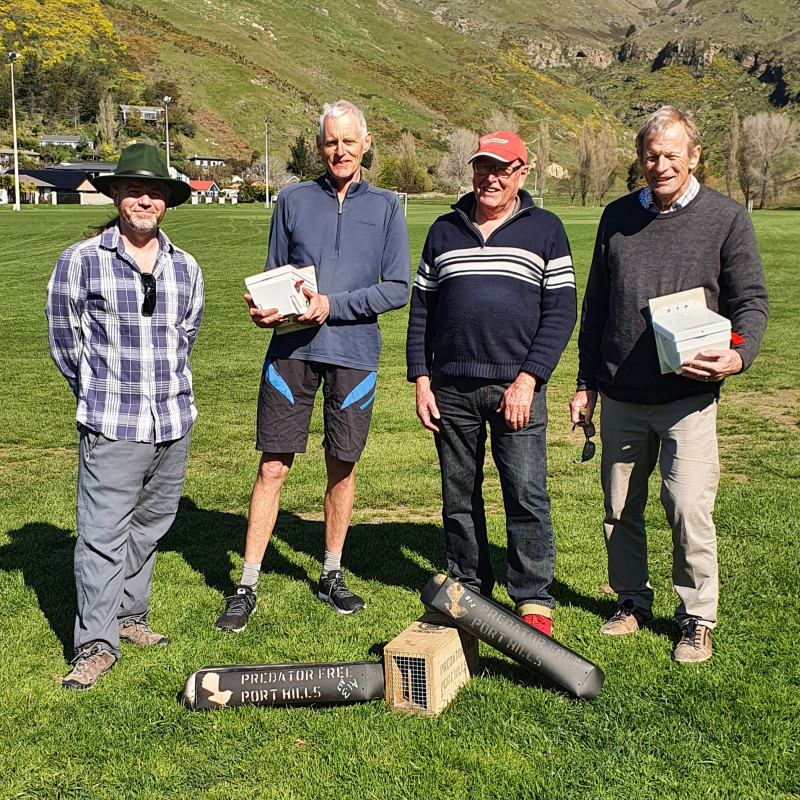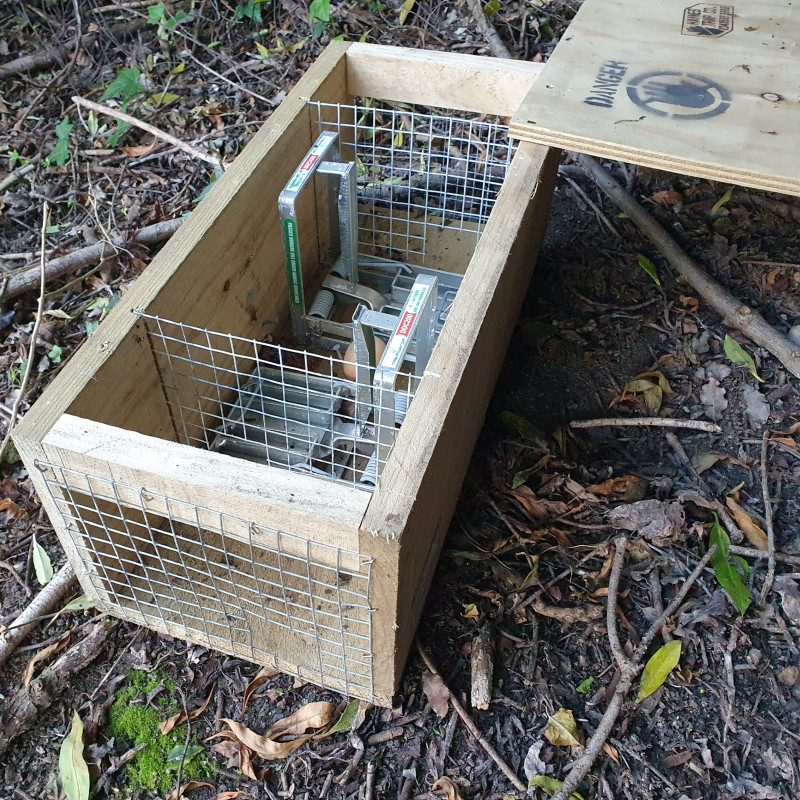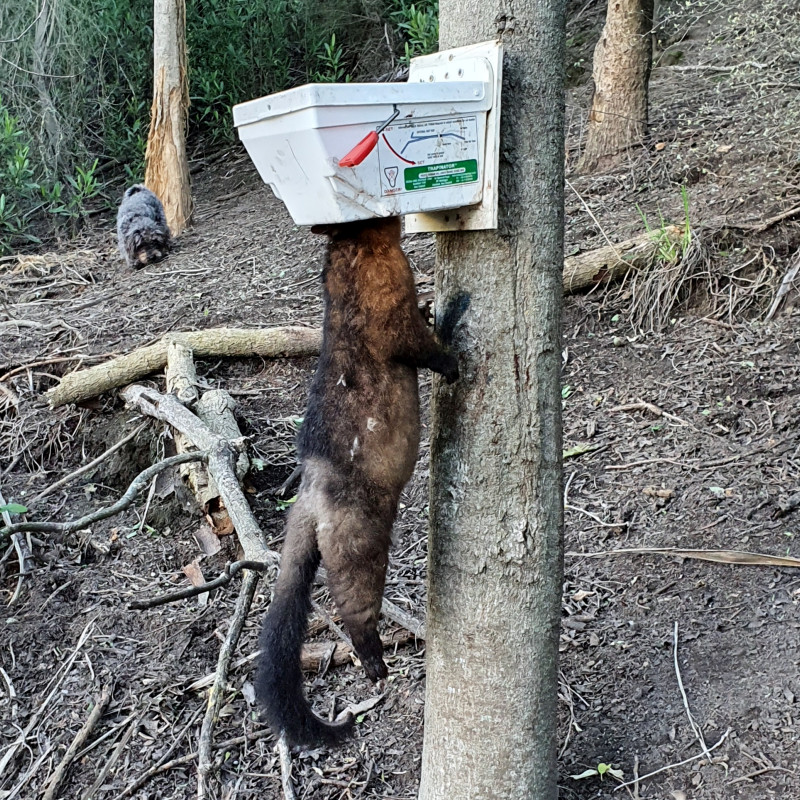
Predator Free Redcliffs: Making it a Reality

Predator Free Redcliffs volunteers (l to r) Matthew Hellicar, John Cook & Martin Ward with Sumner Ferrymead Foundation Trustee John Christensen (far right)

Trap box with 2 DOC200 traps. This form of trap has been designed for rats, stoats and weasels. There is an egg positioned between the two traps that act as a bait. Entry is via a hole in the steel mesh at either end.

Possum caught in a ‘Trapinator’. A trap that is attached to a tree specifically to catch possums.
Back in 2015, the then Prime Minister announced a goal of eradicating all non-native predators – primarily rats, possums and stoats as they inflict the worst damage - by 2050 in order to protect the country’s indigenous wildlife. To achieve such a goal it was essential to connect the efforts of a range of interested parties; from government and scientists through to private businesses and philanthropists, and to communities and iwi.
There has long been an interest in making the Port Hills a predator free zone. With the formation of the Predator Free Port Hills, a grass roots conservation charity, the work began. Over time, Predator Free Sumner Bays was formed to focus on a discrete area of the Port Hills, which was further niched with the formation of Predator Free Redcliffs
Like any voluntary organisation, funding is always a problem so when the Sumner Ferrymead Foundation launched their Environment Award earlier this year "It just made sense to apply" said John Cook, one of the Volunteers with Predator Free Redcliffs, "as we needed to invest in more traps and later-model traps too. To be the inaugural winner, to see our hard work being recognised, was extremely gratifying."
John Christensen, a trustee of the Sumner Ferrymead Foundation, said the Foundation was impressed with their structured approach, starting with the baseline survey to understand types and numbers of predators in the bush surrounding Barnett Park, and the initial deployment of traps in the bush areas along the west side of the sports ground. "They needed funds to buy more possum traps to establish the trapping lines into the upper valley in order to catch even more predators. With their proven track record it was not a difficult decision."
The six week baseline survey undertaken by Predator Free Redcliffs identified the hot spots in the area through the use of ink pads inserted in tracking tunnels to identify the different paw marks, and chew cards attached to the base of trees to identify the various teeth marks of different animals. Rats were concentrated near homes whilst possums were found in the bush further up the valley.
The next step was to introduce the traps. "Up in the valley the results were alarming; ten possums were caught in a six week period by a single trap" said Martin Ward, another volunteer. "Additional possums were caught by residents living on the section of Moncks Spur Road that backs onto Barnett Park with their own traps. One of the residents is known to have caught at least 15. This gives us the confidence to put more traps in, and the grant from the Foundation enables this, so we are very grateful. With the scale of our trapping increasing we are hoping to liaise more closely with residents so to create a better coordinated approach to rid this area of possums."
Partnerships are essential if communities want eradicate predators, and not just with residents who already have their own traps. Predator Free Port Hills has a goal of one in five households having a ‘backyard’ trap by 2024. "To support their goal we are looking to work with both Redcliffs Community Shed and Redcliffs School children to make the wooden rat boxes that house the rat traps. The completed trap can then be taken home by the kids" said volunteer Matthew Hellicar. "We also need to partner with interested groups and persons within the community for the eradication of weeds within Barnett Park beyond the dog walking paddock, especially the banana passionfruit plant. This is a popular food source for both birds and possums, but of course they then disperse the seeds wide and far, compounding the problem."
Whilst no quantitative research has been undertaken there is a general consensus that the number of fantails and bellbirds have increased in the area as a result of the work of Predator Free Redcliffs; a rewarding outcome for not just the volunteers who have made this happen, but for the residents too.
We all want to enjoy the sound of the birdsong so what can you do to help to increase our native wildlife?
- Place a rat trap and/or a possum trap in your garden.
- Give your time to help clear the trap lines.
- Provide materials, or funds to purchase materials, to make the rat traps.
Please contact Predator Free Redcliffs (predatorfreeredcliffs@gmail.com) if you can help in any way.